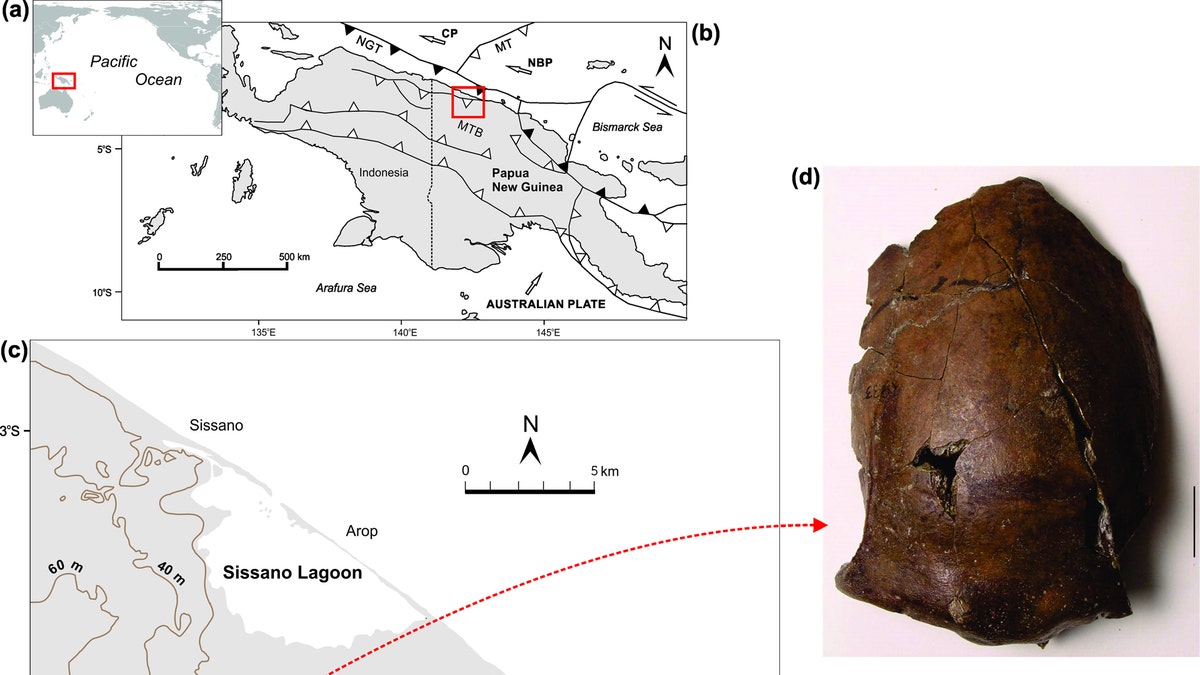
Site location and skeletal remains. (Credit: Goff J, Golitko M, Cochrane E, Curnoe D, Williams S, Terrell J (2017) )
An ancient skull found in Papua New Guinea is evidence of early "human interactions with catastrophic events such as tsunamis," researchers say—and in this case, the "interactions" likely involved "death by sand blasting, dismemberment, impact, and drowning." In a study published in the journal PLOS One, researchers say they believe the 6,000-year-old skull belongs to the first known tsunami victim.
The researchers say surprisingly few fossils of tsunami victims have been found, and this one dates to when people in the region first settled tsunami-prone coastal areas.
Archaeologists first unearthed it in 1929, but researchers say they didn't realize the significance of the area where it was found until sediment was compared to a nearby area devastated by a 1998 tsunami, the BBC reports.
The geological similarities between the sediments "made us realize that human populations in this area have been affected by these massive inundations for thousands of years," says study co-author James Goff of the University of South Wales.
He says the skull likely belonged either to somebody who was killed by the tsunami or somebody who had recently been buried when the tsunami hit, either of which could explain why the rest of the body was never found.
The researchers write that tsunamis may have done much to spread new ideas and practices in that part of the Pacific, since they led to "an increasing reliance on risk-mitigation strategies including the fostering and maintenance of wider-ranging social ties." (On the other side of the world 6,000 years ago, a young couple died in an embrace.)
This article originally appeared on Newser: Ancient Skull Could Be First Known Tsunami Victim
